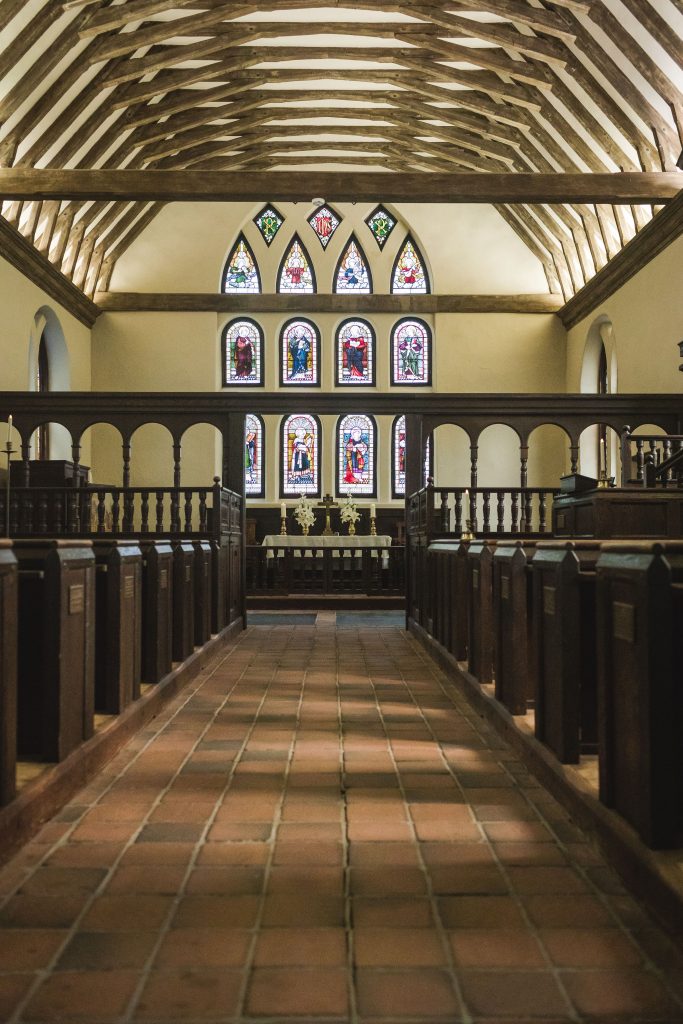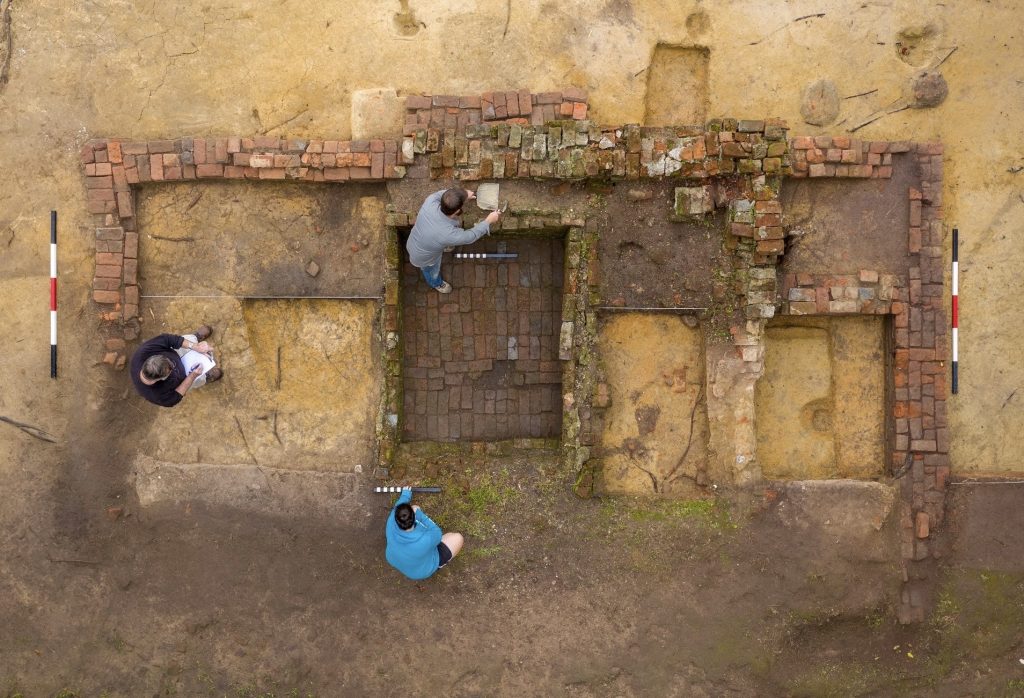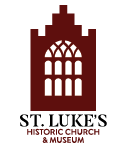Capital Improvement Projects: The Heavy Lifting of Preserving History
Stewardship of the Old Brick Church
In 2012, a scheduled restoration project was undertaken to address some expected and long-known challenges. The 17th century church building required roof replacement, brick repair/replacement, brick mortar repointed, HVAC replaced, structural concerns secured, interior plaster repaired, and roof and groundwater collected and redirected to preserve the building and prevent ground erosion.
These projects were funded by generous grants from the “Saving America’s Treasures” program through the Department of the Interior and Mr. Joseph Luter, III, who followed in the footsteps of his father, who also diligently served and supported St. Luke’s.

Restored church building interior, 2013
Preserving St. Luke’s Historic Church & Museum, the surrounding land, and the many historic artifacts that reside here, requires constant vigilance, stewardship, and significant financial investments. In order to protect the integrity of one of America’s most important and iconic sites, the staff and Board of Directors have embarked on several Capital Improvement Projects (CIP) over the years.
Preserving the Past, Educating the Present, and Providing for the Future
In 2015, St. Luke’s embarked on an intense capital campaign entitled the Major Gifts Initiative. This initiative addressed a number of campus-wide preservation and security challenges, cemetery preservation and development, and underwrote an educational program to benefit our understanding and further enhance our collections, “In Search of Joseph Bridger”: An archaeological expedition at 17th century Whitemarsh Plantation.
Throughout the Major Gifts Initiative, the goal was to also increase invested assets to provide for our future financial needs in support of annual operations. Legacy Funds were created and funds were pledged and received.
St. Luke’s has plans to increase capacity and further enhance community impact. Stay tuned for information.
“TowneBank Foundation is proud to further support St. Luke’s important cultural exploration and academic findings at the Whitemarsh Plantation Archaeological Project in Isle of Wight County. We hope that generations of scholars and the visiting public will find the project’s artifacts and stories enlightening and inspirational in telling of our Nation’s founding.”
– Robyn Leavy, TowneBank Foundation

Overhead view of partially excavated 1650s house site located at Whitemarsh Plantation, 17th century home of Colonel Joseph Bridger, chief patron of St. Luke’s Historic Church.
